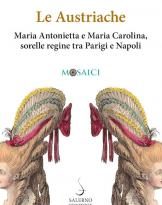Maria Concetta Calabrese
Ed. Franco Angeli, Milan 2018
pagg.186
Professor of Modern History at the Department of Political and Social Studies of the University of Catania, the author, in this essay, explores the link between the cities of Genoa and Messina, in the sixteenth and seventeenth centuries, through the consular institute that "constitutes an element of particular interest in the study of the construction of power relations, not only in relations between states, but also in the formation of institutional balances within the state. [...] The consulate was the pivot of local relationship networks, but also of a supra-local network, which was integrated with the diplomatic one. […] The consuls functioned in this context as essential cornerstones of the information gathering and transmission system. Each consul represented the authority of the State from which he came, acted in his name and had the primary task of protecting its interests which were mostly of a private or commercial nature. ”
Genoa, which had commercial interests throughout the Mediterranean, sent its consuls to the most important financial markets, while numerous members of Genoese families emigrated in search of fortune and, “established themselves, they managed to enter the local elites and held leading positions, without severing the link with the motherland, of which they continued to represent the commercial and political interests. The consuls who were to represent the interests of the Genoese Natio were generally drawn from these families and this also happened in Sicily, starting with a strategic place like Messina [...] which constituted a natural eye of Genoa towards the Levant.
The first evidence of the Genoese mercantile presence in Messina dates back to 1116, which, in the XNUMXth century, was one of the most cosmopolitan and “it presented itself as a cluster of identities, where Greeks, Levantines, Genoese, Tuscans coexisted.” The Genoese chose it for its strategic position, as “it had become the logistic platform of the silk trading circuit”, material that Genoese merchants exported from Messina to Genoa and throughout Europe.
The main Genoese families, who settled in the city of the Strait, were those of the Cicala, the Giustiniani and the Salvarezza, while the most ancient consuls of which we have news belong to the Lomellini family. After the Tunis enterprise in 1535, when Charles V made a stop in Messina, the city changed its face as, wanting to be the capital, it spared no expense to welcome the sovereign with sumptuous ceremonies, even erecting triumphal arches. Furthermore, to defend the city from the assaults of the Barbary and the Ottomans, an important fortification work was undertaken, with the viceroy Ferrante Gonzaga, as, “in the 1534s, between 1545 and XNUMX the Turks were rampant in the Mediterranean.” And, in that period, by viceroys, ambassadors and soldiers, extensive use was made of spies to gather information on the Turks.
A fundamental activity, both for the city of Messina, which produced it, and for the city of Genoa, which marketed it, was that of the supply of grain. "For the Spanish viceroys, writes Fernand Braudel, administering, governing in Sicily, means above all dealing with the export of grain." And its marketing, for export purposes, was one of the most important items in the Sicilian economy. Because its finding, for Messina, was a constant need, in times of famine in the city “he habitually resorted to impounding vessels passing through the Straits.” As already previously written, even silk, which was loaded above all on Genoese ships, was an element on whose marketing Messina and its patriciate built their wealth. At the end of the seventeenth century, however, with the restructuring of the Levant trade, which had to deal with the English and the Dutch in the Mediterranean, the export of silk began to decline. "The decay of the jurisdiction of the consulate was accompanied at that time by the decline of the silk trade in those early years of the eighteenth century in which Messina, but soon also Genoa, will close their golden centuries."
Gianlorenzo Capano












